The Everest Base Camp trek is a renowned adventure that offers trekkers the opportunity to witness the grandeur of the Himalayan mountains. As one ascends to the iconic Kalapathar viewpoint at 5,643 meters, the true magnificence of the Everest massif is unveiled. Hikers are rewarded with a breathtaking sunset display, where the snow-capped peaks are bathed in a warm, golden glow. This picturesque moment not only showcases the natural beauty of the region but also highlights the cultural richness that permeates the Everest trekking experience. For those seeking an unforgettable journey, the Everest Base Camp trek with a sunset view from Kalapathar is a must-consider adventure.
Key Points
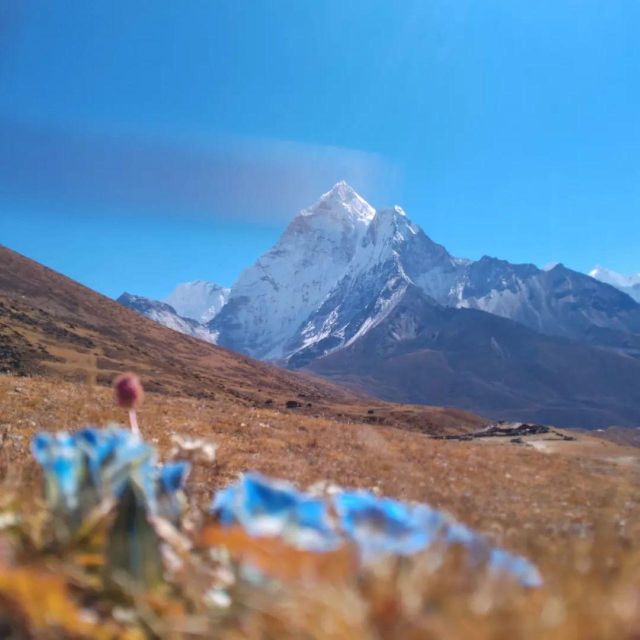
- The Everest Base Camp trek culminates at the base of Mount Everest (8,848 meters), providing trekkers with stunning views of the Khumbu Glacier.
- From the summit of Kalapathar (5,643 meters), trekkers can enjoy breathtaking panoramic views of the Everest massif, including the iconic South Face and Khumbu Icefall.
- The trek offers the opportunity to witness the warm glow of the sunset over the snow-capped peaks, creating an unforgettable Himalayan experience.
- Trekkers can explore ancient Buddhist monasteries and enjoy the rich culture and hospitality of the Sherpa people during the journey.
- Proper physical conditioning, appropriate gear, and obtaining necessary permits are essential for successfully completing the Everest Base Camp trek with the Kalapathar sunset view.
Trek Overview and Experience
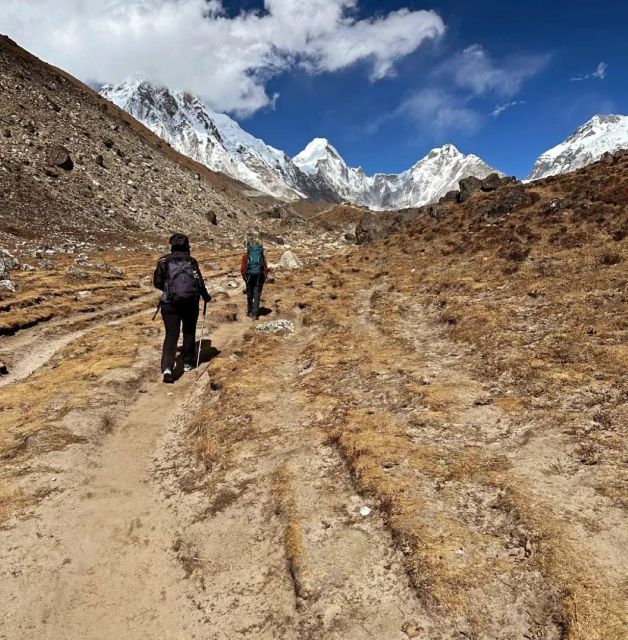
The Everest Base Camp trek offers a premier trekking experience in the breathtaking Himalayan mountains, allowing adventurers to journey to the base of the world’s highest peak, Mount Everest, standing tall at 8,848 meters (29,029 feet).
Beginning in Lukla, Nepal, this challenging yet rewarding trek takes you through Sherpa villages, ancient monasteries, and stunning landscapes.
You’ll traverse suspension bridges, pine forests, and the renowned Khumbu Icefall, while enjoying panoramic views of Everest, Lhotse, Nuptse, and other majestic peaks.
The trek culminates at Everest Base Camp, where you’ll witness the awe-inspiring Khumbu Glacier.
This unforgettable journey provides a unique opportunity to learn about the rich culture and hospitality of the Sherpa people.
Ready to hit more trails? More hiking adventures we feature in Lukla
Itinerary and Duration
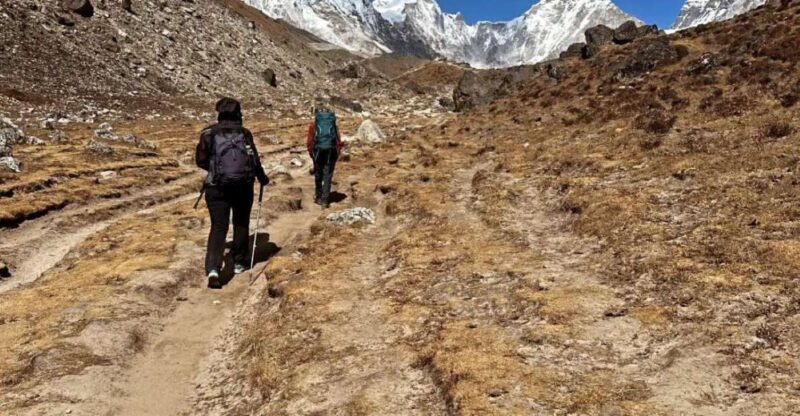
This Everest Base Camp trek spans a duration of 30 days, offering a well-planned and safe expedition led by expert guides.
Trekkers can expect daily trekking with cozy teahouse accommodations, seeing the cultural richness and hospitality of the Sherpa people along the way.
The itinerary includes round-trip flights from Kathmandu to Lukla, with private transfers to start the trek.
Trekkers will spend three nights in Kathmandu before embarking on the journey to Everest Base Camp.
Throughout the trek, they’ll enjoy three meals daily and experience the stunning Himalayan landscapes, from pine forests to the awe-inspiring Khumbu Icefall.
Inclusions
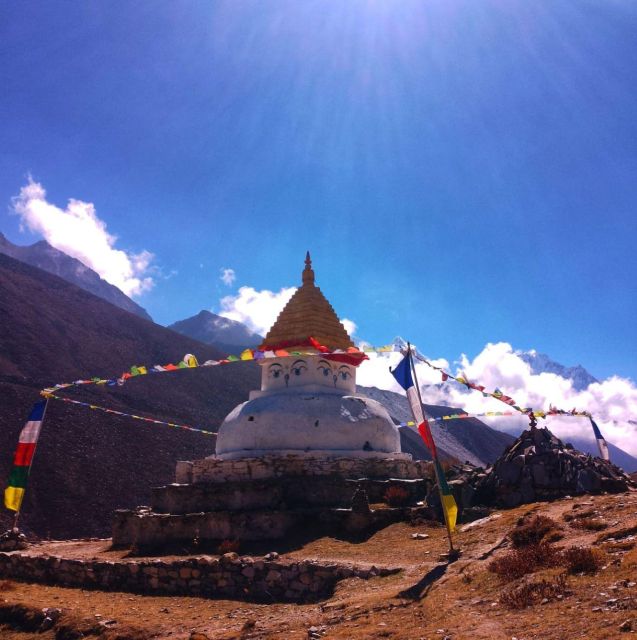
The Everest Base Camp trek package includes a comprehensive set of amenities and services to ensure a seamless and enriching trekking experience.
From airport pickup and Kathmandu accommodations to all necessary permits and round-trip flights to Lukla, the organizers have thoughtfully curated the inclusions.
Trekkers will enjoy three meals daily, cozy teahouse lodging, and the expertise of experienced English-speaking guides and capable Sherpa porters.
The package also covers Sagarmatha National Park entry fees, ensuring a smooth and worry-free journey to the base camp of the world’s highest peak.
With these inclusions, adventurers can focus on seeing the stunning Himalayan landscapes and Sherpa culture throughout the trek.
Exclusions
Alongside the comprehensive inclusions, the Everest Base Camp trek package also outlines several exclusions travelers should be aware of prior to booking.
Personal travel and medical insurance aren’t covered, so it’s crucial for adventurers to secure their own policies.
International airfare, alcoholic/non-alcoholic beverages, desserts, and hot showers are also excluded.
Plus, travelers will need to cover their own tips for guides, porters, and drivers.
Kathmandu sightseeing fees of $30 USD per person also aren’t included.
Lastly, hikers should budget for any excess baggage fees on the Lukla flight.
While these exclusions may seem daunting, they provide transparency, allowing trekkers to plan accordingly for a seamless and memorable Everest Base Camp experience.
More Great Thing To Do NearbyBooking and Cancellation Policy
Booking the Everest Base Camp trek requires a price tag of €1,205.03 per person, with the flexibility of free cancellation up to 24 hours in advance for a full refund. This allows travelers to secure their spot without the worry of last-minute changes.
To make the booking process hassle-free, the tour operator offers the option to reserve now and pay later. This provides ample time to finalize travel plans and ensure a seamless experience.
Travelers are encouraged to review the trip inclusions and exclusions carefully to understand the overall costs and plan accordingly.
For detailed itinerary information, interested parties can reach out to the tour operator at [email protected].
The Everest Base Camp trek is a once-in-a-lifetime opportunity, and the flexible booking policy makes it easier to turn this dream into reality.
Views From Kalapathar

Reaching the summit of Kalapathar at 5,643 meters (18,514 feet) provides trekkers with some of the most breathtaking views along the Everest Base Camp journey.
From this vantage point, climbers are rewarded with a panoramic vista of the mighty Everest massif, including the iconic South Face and the treacherous Khumbu Icefall.
The sunset over the snow-capped peaks is particularly stunning, casting a warm glow across the rugged landscape.
Kalapathar also offers unobstructed views of other legendary peaks like Lhotse, Nuptse, and Changtse, giving trekkers a true sense of the Himalayan grandeur.
This challenging ascent is well worth the effort for those seeking an unforgettable experience in the shadow of the world’s highest mountain.
Highlights of the Trek
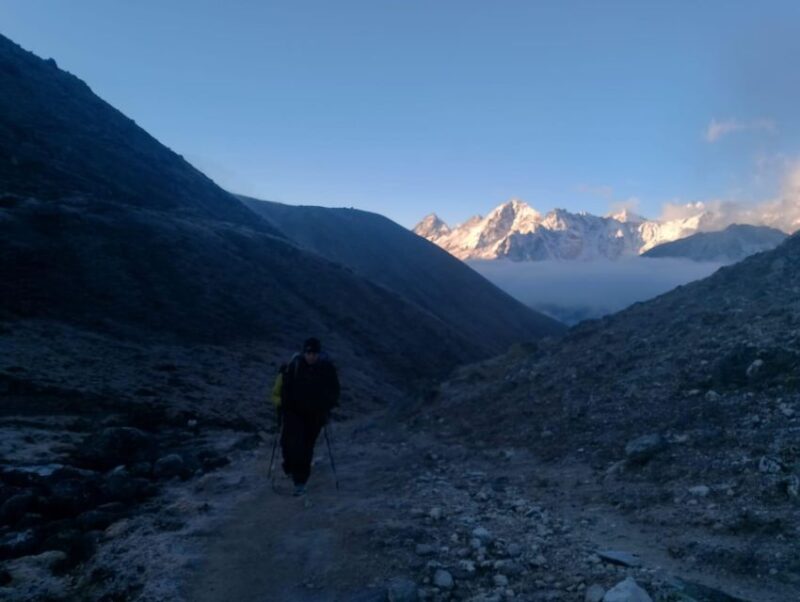
Trekkers can expect a variety of captivating highlights along the Everest Base Camp journey, from crossing iconic suspension bridges to seeing vibrant Sherpa culture.
The trek offers a unique chance to witness the stunning panoramic views of the world’s highest peaks, including Everest, Lhotse, and Nuptse.
Along the way, adventurers will have the opportunity to:
-
Explore ancient Buddhist monasteries and learn about the rich spiritual heritage of the region
-
Traverse the Khumbu Icefall, a mesmerizing and ever-changing glacial landscape
-
Savor the warmth and hospitality of the Sherpa people, who call this remarkable region home
Preparing for the Adventure

Preparing for the Everest Base Camp trek requires thorough planning and consideration of several key factors to ensure a safe and enjoyable experience.
Proper physical conditioning is essential, as the trek involves long days of hiking at high altitudes. Hikers should gradually build up their endurance through regular exercises and short hikes.
Packing the right gear, including warm clothing, sturdy boots, and trekking poles, is crucial to manage the changing weather and terrain.
Travelers must also obtain the necessary permits, arrange for transportation, and familiarize themselves with the local culture and customs.
Frequently Asked Questions
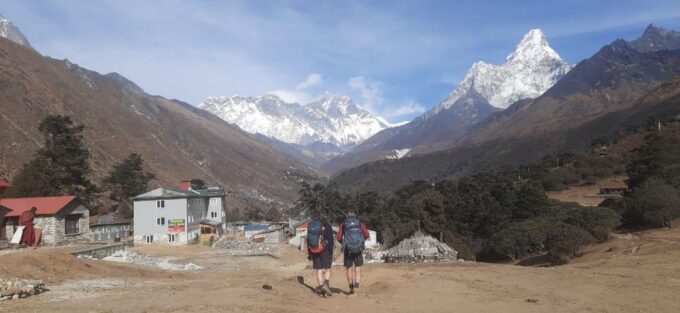
What Is the Best Time of Year to Do the Everest Base Camp Trek?
The best time to do the Everest Base Camp trek is typically between March and May, or September and November, when the weather is mild and the skies are clear, offering the best views of the Himalayas.
How Difficult Is the Everest Base Camp Trek Physically?
The Everest Base Camp trek is physically demanding, requiring good fitness and stamina. Trekkers must navigate high altitudes, steep climbs, and challenging terrain. Proper preparation, gradual acclimatization, and a positive mindset are essential for successfully completing this trekking adventure.
What Is the Average Daily Trekking Distance and Elevation Gain?
The average daily trekking distance for the Everest Base Camp trek is around 5-7 hours, covering 10-12 km. The daily elevation gain varies, typically ranging from 300-800 meters, with the highest point being Kala Patthar at 5,643 meters.
Can I Rent Gear and Equipment for the Trek in Kathmandu?
Yes, you can rent essential gear and equipment for the Everest Base Camp trek in Kathmandu. There are many well-stocked outdoor shops that offer a wide range of trekking gear, allowing you to pack light and save on costs.
What Is the Altitude Sickness Risk and How Is It Managed?
Altitude sickness is a significant risk on the Everest Base Camp trek, but it’s well-managed. Guides monitor climbers closely, and acclimatization days are built into the itinerary. Supplemental oxygen is available if needed to safely manage the condition.
Recap
The Everest Base Camp trek is a once-in-a-lifetime experience that offers breathtaking views of the Himalayan peaks, including the iconic Everest.
The trek culminates at Kalapathar, where trekkers are rewarded with a stunning sunset over the snow-capped mountains.
With a well-planned itinerary and proper preparation, adventurers can enjoy the natural beauty and cultural richness of the region, making this trek an unforgettable journey.
You can check if your dates are available here:More Hiking & Trekking Tours in Lukla
More Tour Reviews in Lukla
Not for you? Here's more things to do in Lukla we have recnetly reviewed
- 11 Best Helicopter Flights And Tours In Lukla
- 3 Best Private Car With Driver Services In Lukla
- 9 Best Tours In Lukla
- 7 Best Hiking And Trekking Tours In Lukla
- Everest Base Camp With Cho La & Renjo La Pass Trek – 19 Days
- Kathmandu: Everest Base Camp Helicopter Tour With Breakfast
- Everest Scenic Mountain Flight With Guaranteed Window Seat
- Everest Base Camp Trek
- Kathmandu: Mt. Everest Scenic Flight by Airplane
- Everest Base Camp Classic Trek
- Mera Peak Climbing
- Lukla to Kathmandu Flight Tickets for Everest Trekkers
